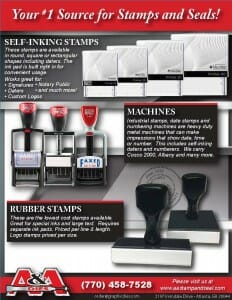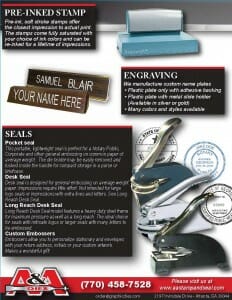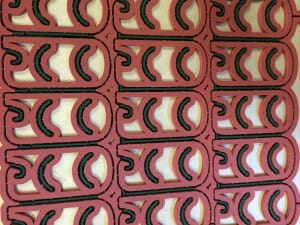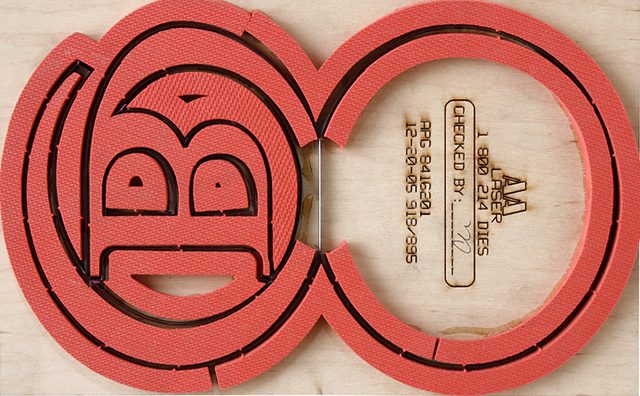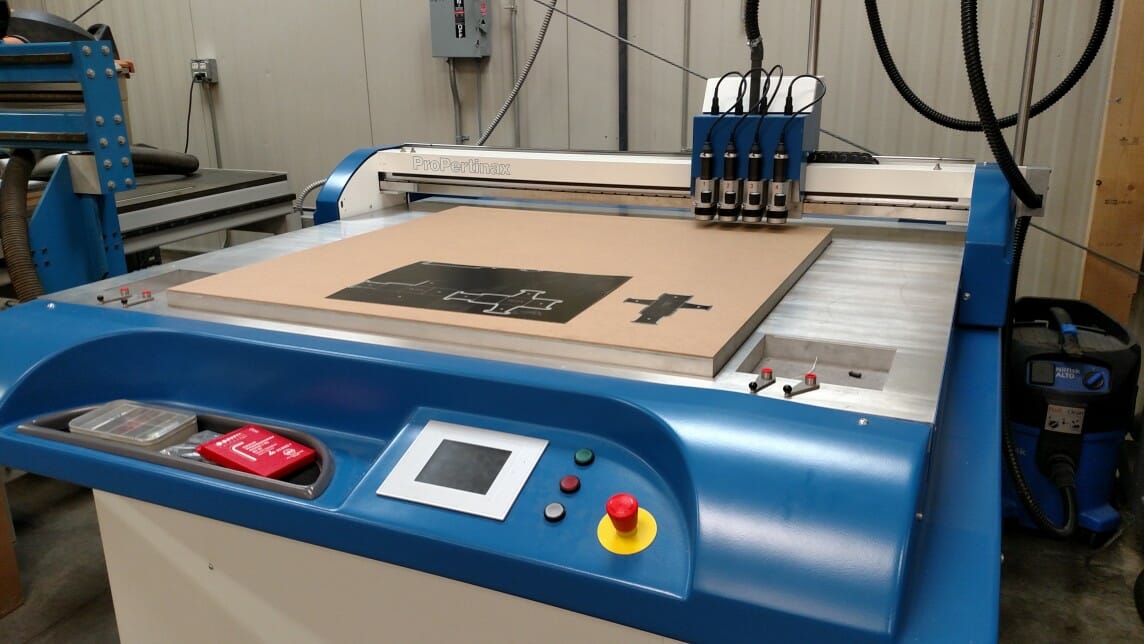How many impressions can or should be expected on a die? Wow, this is a loaded question and there are many variables that determine the answer. Most people think it mostly has to do with the hardness of the knives, when actually that is usually never the determining factor. The life of a die is directionally proportional to the length of the make ready. This is a fancy way of saying the quality of the make ready on press is the single most important factor in the longevity of a die. One hard hit on the platen will flatten a die. The steel on the platen is way harder than the steel in the knives. If they make hard contact the bevel of the knife will be rolled like a butter knife. You can look down on the rule and see the shiny surface of a flat knife. When you cut against a hard platen, the press must be brought up slowly until they just kiss. Cutting against a soft anvil, such as styrene or polyethylene, is the preferred method especially when cutting plastics and harder substrates. When the knives penetrate your material it then hits the sacraficial material instead of the hard steel platen.
The number of times a die is set up also influences the life of a die. Most wear on a die comes in the first few strikes. So if the die is left on for a long run it will last for more impressions, than if it is a short run die used every week. It is also important to keep presses level and in good operating shape. Plates, press beds and blankets that are in poor shape are sure to damage dies. Many pressman with these problems use steel shim tape to excess which is sure to wear dies. So in a perfect world, how long will my die last?
Paper-We have seen dies upwards of 250k impressions
Lamination-Expect 10-15k impressions
Thin Aluminum-2000 impressions
Chip Board-30-50K depending on whether or not if you hit a staple or other metal.
Styrene-30-50k impressions
Materials are also a determining factor on the life of a die. Paper is abrasive and wears on the rule but plastics such as lamination and styrene are much more abrasive. Chip board has lots of trash because it is a recycled product. It even contains metal from staples and is hard on the knife.
So as you see, there is no easy on answer on the question of die life. If you are having problems with short die life, we can help you to determine the reason. Check out our website, graphicdies.com, to see some of our work.
